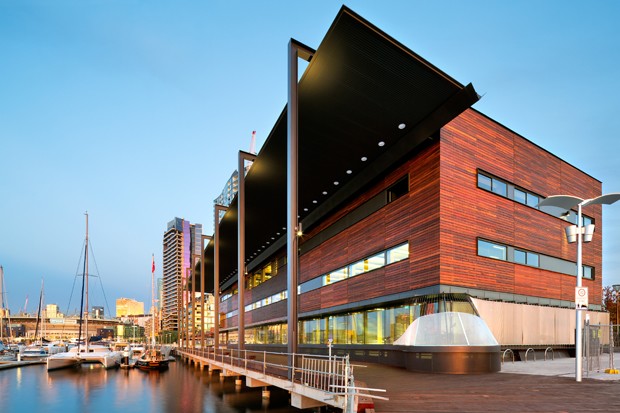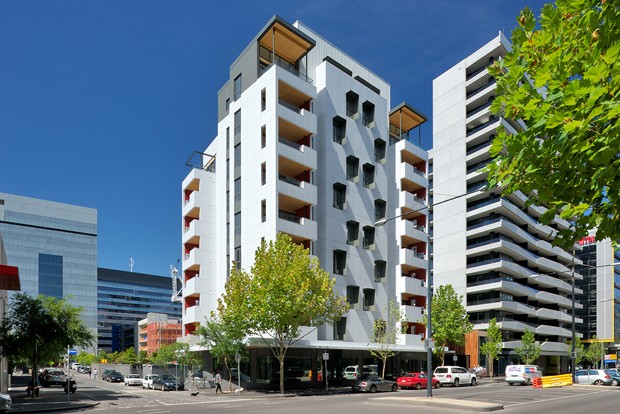Lend Lease’s Head of Operational Excellence, Daryl Patterson, will join a panel of eight other international experts to ensure the US$2 million Tall Wood competition, jointly sponsored by the US Department of Agriculture, will lead to a viable project winner.
The competition invites US developers, institutions, organisations and design teams to submit entries that undertake alternative solutions to construct taller timber buildings.
According to the organisers, the large prize money is being offered to overcome one of the main barriers to the use of new building materials and systems – the lack of risk capital to support the additional costs of analysing novel design and engineering alternatives.
Patterson was invited to join the jury based on his experience as a developer interested in working with timber projects. We ask him how Australian architects can get past the risk and cost barriers of building taller timber, why the US$2 million prize is important for the competition, and whether anything is done locally to encourage more timber buildings:
A&D: How can Australian architects get past the high cost and risk barriers of investing and applying new timber methods, especially since clients are not always open to unfamiliar ‘risky’ construction methods?
Patterson: Essentially the costs need not be substantial. In the last 2-3 years there has been an explosion in the availability of high quality data and research that supports the case for timber engineered buildings. Much of this is available online from excellent resources such as Wood Solutions in Australia, or Wood Works in the USA.
The focus on sharing research in the public domain enables designers to avail themselves of substantial resources to self-educate to a point where they can influence authorities and clients alike. Beyond education the key issue will still remain a client’s propensity to try something innovative and that can be assisted where designers demonstrate they have acquired a good understanding of the risks and solutions.
Ultimately to bring a timber engineered building to fruition a nexus is required between equally motivated builder, architect, engineer and developer / client. All parties need to have a common interest in achieving the outcome. Clearly this was an advantage for Lend Lease where all these parties were “under the same roof” and the nexus naturally existed.
What were Lend Lease’s main incentives for investing in the research for Forte and Library at the Dock?
Innovation is a core value for Lend Lease and both of those projects represent the visible tip of the research and development that has been undertaken to ensure we are seeking out world’s best practice and innovations that can also contribute to top line and bottom line growth.
Pressures to find opportunities to build cost effectively, to utilise land with difficult ground conditions or to produce built form under demanding deadlines keep us looking at new technologies such as Cross Laminated timber. Ultimately that research is paying off as we see now a marked competitive advantage for using these systems.
Library at The Dock has been delivered through a tri-partnership arrangement between the City of Melbourne, Lend Lease and Places Victoria. The Design Architect for the project was Clare Design with Hayball as the Architect of Record.

Library at the Dock: Australia's first cross laminated timber public building. Photography by Diana Snape
The US Government is keen on encouraging structural timber innovations, as evidenced by the Tall Wood Competition. What is the purpose of such measures?
The US Department of Agriculture is jointly sponsoring a Tall Wood competition with the intent of stimulating investment and employment in the forestry industry. They have observed international trends in the use of engineered timber in larger and larger structures, including our Forte project, and they hope that by assisting the property industry, they can create a pull through demand for new wood products in the agriculture sector.
The US market faces challenging limiting codes and regulations that do not necessarily permit the use of performance based alternates (as is possible in Australia) and therefore overcoming some of the regulatory hurdles is likely to be a more protracted and expensive undertaking there than in Australia. The $2m prize money is intended to address some of that challenge for successful proponents.
To ensure the competition selects a viable project a jury of nine international experts has been assembled with a diversity of experience across the entire project creation and delivery chain.
The USDA commented last week that more than 100 registrations of interest have been received to date.

Forte is the world's tallest residential timber building
Is the Australian Government or industry doing anything similar?
All tiers of government responded favourably to the Forte project, recognising that it delivered new potential for the property industry and forestry industry alike. Federal, state and local authorities have all demonstrated a willingness to understand where and how codes and regulations can adapt to encourage more innovative solutions. Recommended code changes under consideration include increasing the height for which timber construction is permitted as of right now (currently only 3 storeys).
However at this time there has not been any direct government action with either the property or forestry industries to encourage taller timber in Australia.
In the recent New Zealand election the Green Party proposed a $1m prize for the delivery of a 10 storey building in that country but there is no sign that will be adopted by the incoming government.

